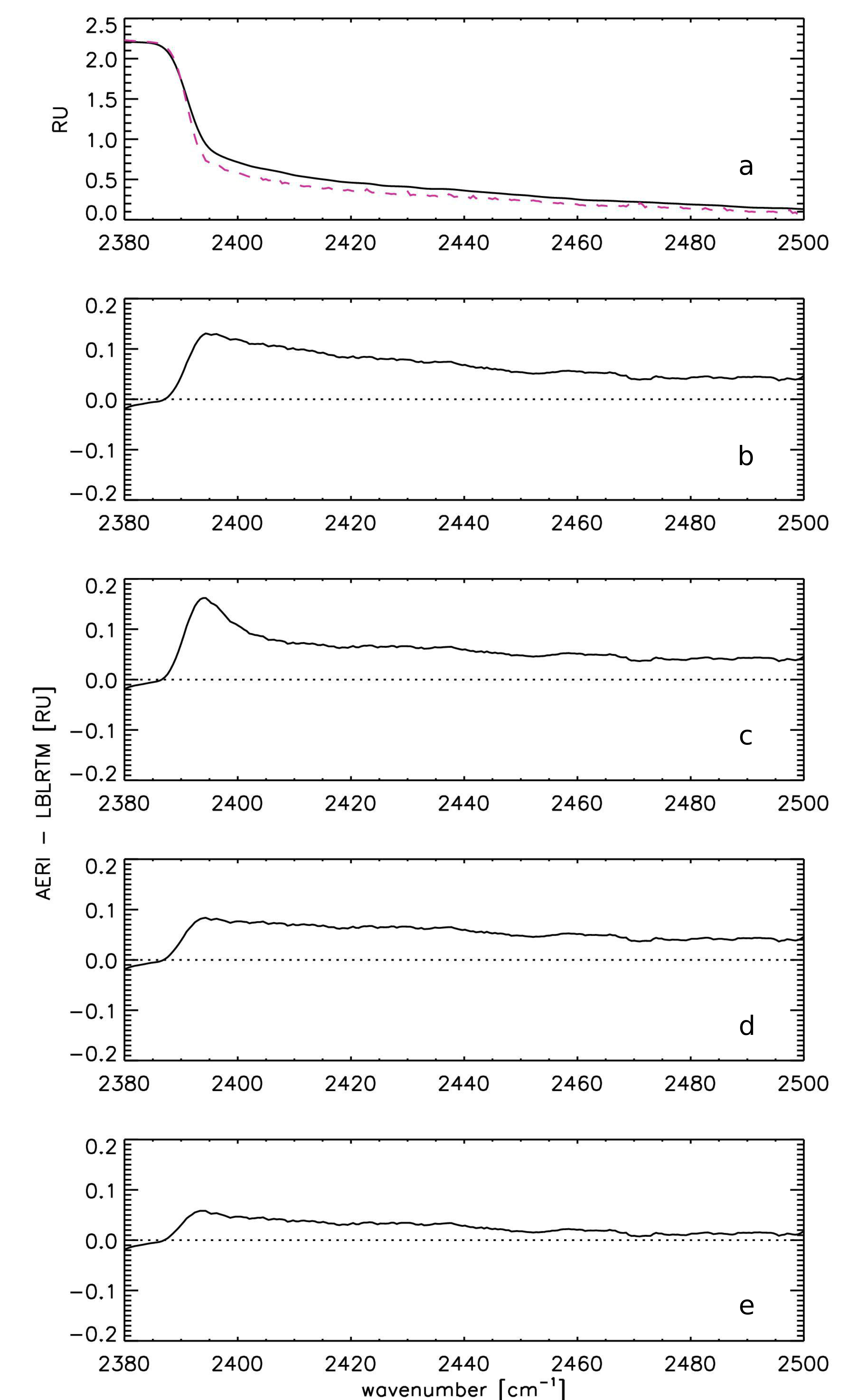Development and Recent Evaluation of the MT_CKD Model of Continuum Absorption
Submitter:
Mlawer, Eli Jay — Atmospheric and Environmental Research, Inc.
Area of research:
Radiation Processes
Journal Reference:
Science
Absorption and emission of radiation by atmospheric gases are important drivers of Earth’s climate. Due to the inherent physical properties of water vapor molecules and their abundance in the atmosphere, radiative processes due to water vapor play an especially prominent role. Absorption/emission by water vapor molecules occurs at discrete spectral locations, called absorption lines, and in a relatively spectrally smooth feature referred to as the water vapor continuum. The physical origin and properties of the water vapor continuum have been debated and probed with measurements for decades. Because accurate laboratory measurements of the continuum’s strength and spectral behavior are challenging, field-based measurements of these properties have been crucial in improving our knowledge of water vapor continuum absorption and, consequently, our ability to represent this key atmospheric process in radiative transfer codes that help us analyze and predict current and future climate. Observations at ARM sites and from ASR/ARM-funded research have been instrumental in the development of a widely used parameterization of water vapor continuum absorption, the MT_CKD continuum model. This research highlight concerns a recently published paper that describes the development and evolution of the MT_CKD model and details a recent analysis involving measurements of the atmospheric emitted radiance interferometer (AERI) at the Southern Great Plains (SGP) site that led to a major modification to the modeled continuum absorption in the 4 μm region.
Impact
The spectral region around 4 μm is characterized by an extremely rapid decrease in absorption with decreasing wavelength over a very short spectral interval. Spectrally resolved satellite measurements from this limited spectral region contain a great deal of information on atmospheric temperature profiles and therefore hold enormous potential for temperature remote sensing if accurate knowledge of the absorption properties of all gases that are active in this region can be obtained. The main absorbers in this spectral region are N2, CO2, N2O, and H2O, so comparisons of spectral radiation measurements with calculations by radiative transfer codes (i.e. “radiative closure study”) must involve careful analysis of the uncertainties in our knowledge of the absorption properties of these species. Using AERI measurements at SGP from 1999 to 2001, as well as spectrally resolved measurements from two satellite-based instruments, a radiative closure study was performed in the 3.85–4.19 μm spectral region. Because the proportion of the total absorption from water vapor and the other gaseous species varied with the moistness of the atmosphere associated with each observation, each measurement data set was subdivided by precipitable water vapor (PWV) content.
For the driest cases (0–2 cm of PWV), analysis of the ARM ground-based AERI and satellite-based measurement data sets consistently demonstrated that there was an underestimation in the parameterization of continuum absorption due to CO2 in the radiative transfer code. Modifying this parameterization (see figure) allowed the strength of the water vapor continuum to be evaluated using the AERI and satellite observations from more moist cases (2–4 cm and 4–`6 cm of PWV). As in the analysis of the dry cases, consistency between the ground-based and space-based data sets were key to a confident analysis of the moist cases. The AERI cases were especially valuable in this analysis for a number of key reasons: each case analyzed had an associated vertical profile of temperature and water vapor derived from ARM radiosonde and microwave radiometer measurements that was representative of the atmospheric state impacting the AERI measurement; the AERI calibration has been considered in detail, and the SGP AERI is well-maintained by its instrument mentor and ARM infrastructure personnel; and comparisons between ground-based measurements and model calculations are not affected by uncertainties in surface properties, unlike those using satellite measurements.
Summary
The analysis of the moist cases determined that the strength of the dominant source of water vapor continuum absorption in this region, the “self” continuum, was substantially underestimated. New continuum absorption coefficients were derived in this spectral region for the MT_CKD model that are greater by a factor of 5–7 than the coefficients in the previous version of the model. Further analysis has demonstrated that this change leads to greater consistency between satellite-based temperature retrievals based on the CO2 absorption band in this region and temperature retrievals that use satellite radiance measurements from the CO2 absorption band at 15 μm.


